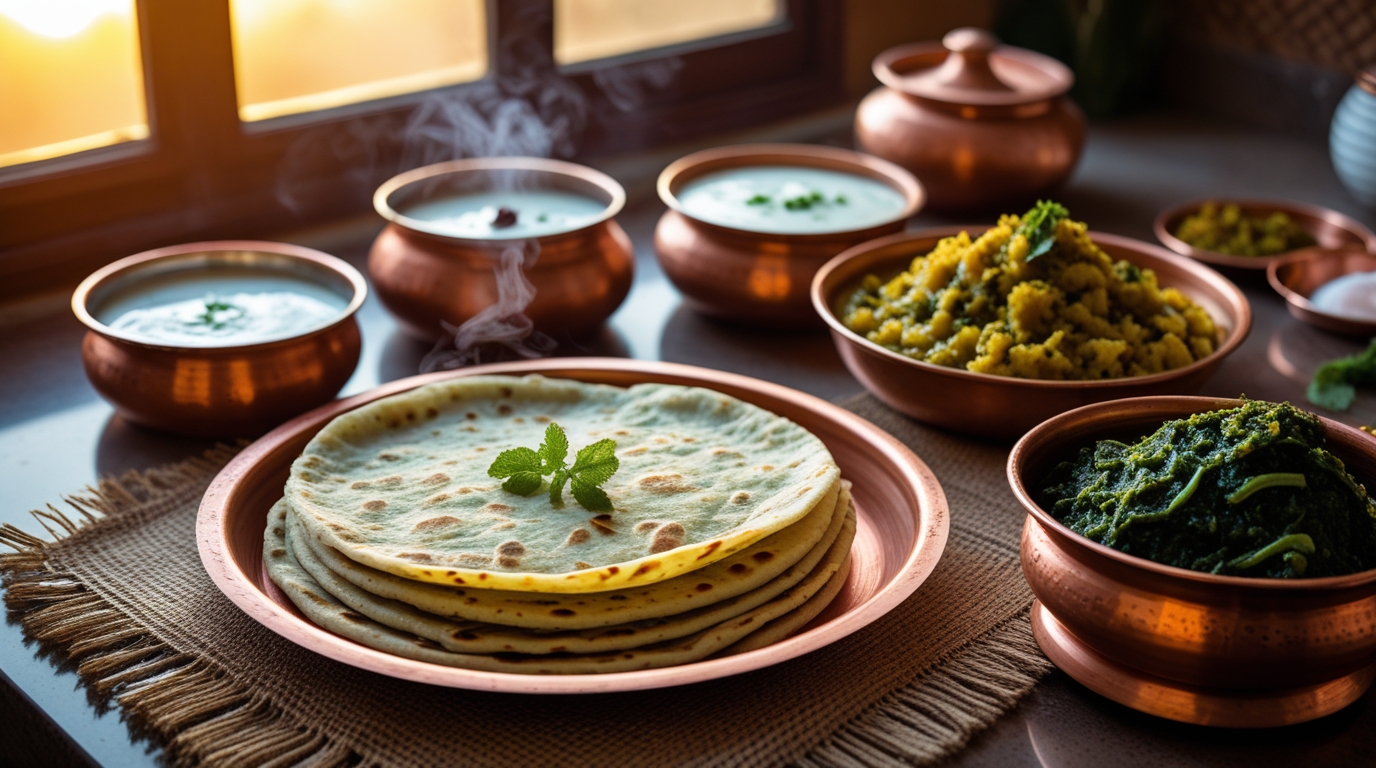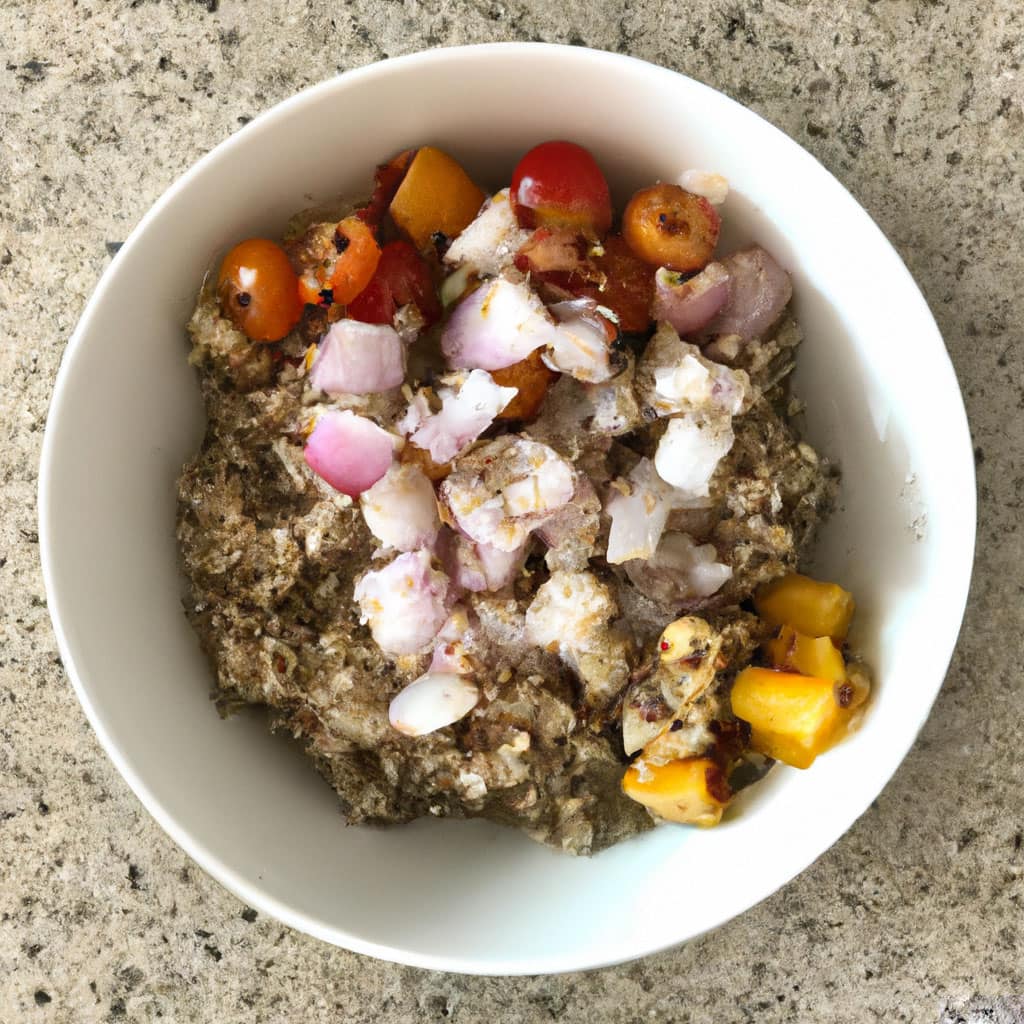Introduction: More than just roti
Punjabi-style Pudina Paratha recipe: Close your eyes, friends. Imagine the crackling of ghee on a hot pan, the earthy aroma of wheat and the tangy, cool scent of fresh mint. That’s the magic of the authentic Punjabi-style Pudina Paratha. And forget dry, tasteless roti. This is a flaky, layered delicacy, every bite of which is infused with fresh herbs, warm spices and the soul of North Indian home cooking. We’re not just making parathas, we’re creating a joy of eating, inspired by grandma’s wisdom.
Read More : 10 Min Mein Ready! No-Cook Kashmiri Anardana Chutney – Bina Gas, Restaurant-Style Chatpati Magi

Why Punjabi style is special: Expert opinion
As grandma kneads the dough with her hands, she explains that Punjabi parathas are not shy. They are full of flavour. We don’t sprinkle mint on it; we chop it generously. Our ghee is not a drop, it’s a loving drip in every layer. And the spices should whisper, not scream (cumin).
Science and Soul: Punjabi-style Pudina Paratha recipe
The power of mint: Studies show that mint aids digestion – perfect with rich Punjabi food. Kids often refuse green vegetables, but finely chopped mint in parathas can make them want to eat it. Even my most fussy grandson asks for it again, says grandma.
The goodness of wheat: Rich in fibre (10-12g per cup of flour on average), it balances indulgence. Grandma insists on fresh flour from the atta chakki for unmatched flavour and softness.
Ingredients: Punjabi-style Pudina Paratha recipe
| Ingredients | Quantity | Punjabi Pro-Tip from Grandma |
|---|---|---|
| Wheat Flour | 2 cups | “Chakki ka Atta is the best!” (Stone ground flour is the best!) |
| Fresh Mint | 1.5 cups, packed and finely chopped | “Wash and dry well! Wet mint = wet parathas.” |
| Fresh Coriander | 1/2 cup, finely chopped | “Coriander leaves brighten like the sunshine!” |
| Green Chillies | 1-2, finely chopped | “Seeded for the kids, left for the spiciness!” |
| Ginger | 1 inch, grated | “Freshly grated, beta. The powder is lazy!” |
| Ajwain (Carom Seeds) | 1 tsp | “Secret weapon for digestion and crunchiness.” |
| Cumin seeds (jeera) | 1 tsp | “Tempered lightly in ghee first? Even better!” |
| Salt | To taste | “Start with 1 tsp, adjust later.” |
| Water | ~3/4 cup | “Son, lukewarm water makes the dough soft.” |
| Ghee/Oil | For cooking and coating | “Pure Desi Ghee, for real taste, no compromise!” |
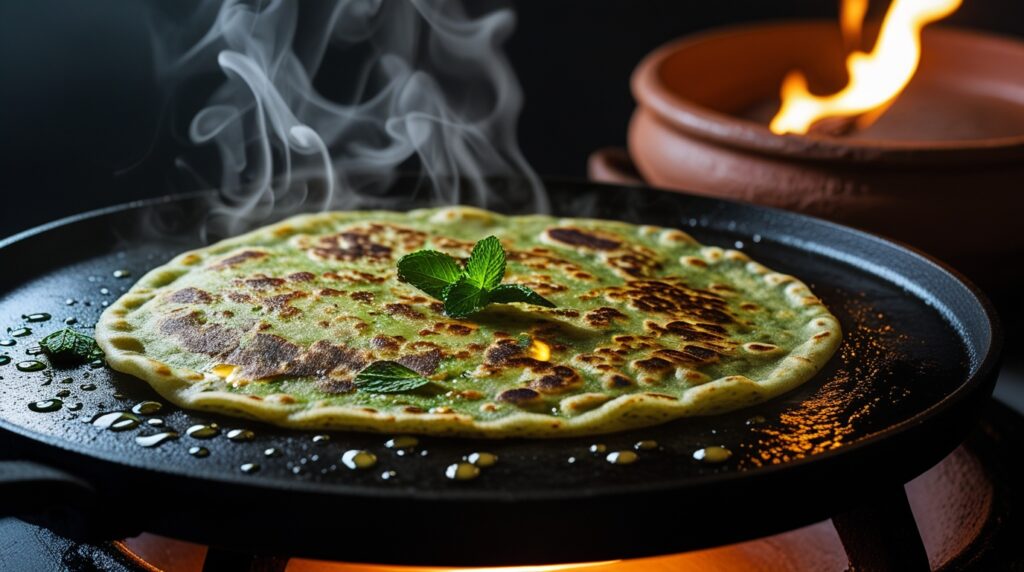
The Art of Creation: Step by Step with Grandma’s Wisdom
1. The Foundation: Perfect Dough
Friends, dough is the soul of your paratha, says grandma. In a large bowl, combine the flour, salt, ajwain and 1 tbsp oil.
Pro-tip: “Rub oil into the dough like you are massaging a baby’s head – gently.
2. Chatak Bhaarwan: Pudina Power
Slowly add lukewarm water, keep mixing till the dough becomes soft and pliable. Cover with a damp cloth. Let it rest for 30 minutes. Son, rest. Good things take time.
While the dough is resting, friends, add chopped mint, coriander leaves, green chillies, ginger, cumin seeds and a pinch of salt. No water! Squeeze? Never! Chop finely, keep dry.
3. Magic of Layers: Punjabi Way
Divide dough into 8 equal balls (like small lemons).
Roll one ball into a 4 inch circle. Brush well with melted ghee.
Secret Layer: Sprinkle 1.5 tbsp of stuffing mixture evenly on the ball. Cover the surface, son! Don’t be stingy
Fold the ball in half (semicircle). Apply more ghee on top. Fold again (quarter circle). Seal the edges gently. This creates layers!
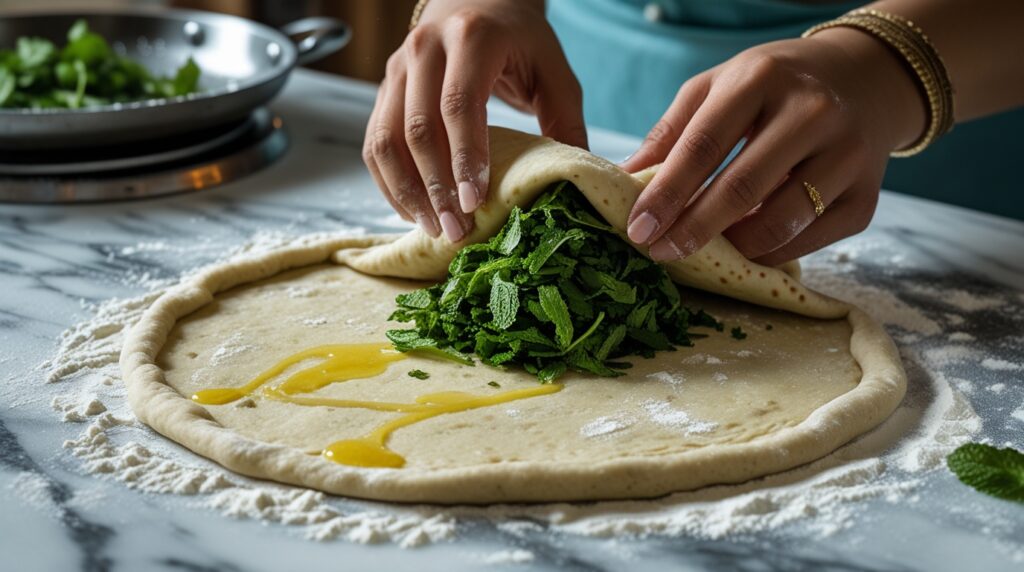
4. Careful Rolling: Gentle Hands Win
Lightly sprinkle dust on the folded triangle. Roll it out gently into a 6-7 inch triangle or circle. Roll from the center outwards. Don’t crush it like a worm! Gentle pressure keeps the layers separate.
5. Superb Tadka: Cooking at its finest
- Heat a heavy tawa or griddle on medium heat. Place the rolled paratha on it.
- Cook for 30-40 seconds until light bubbles appear. Flip.
- Spread half a tsp ghee/oil on the top side. Flip again.
- Now spread half a tsp ghee/oil on the other side. Press gently* with a spatula.
- Cook till both sides are golden brown with dark spots (like tiny pits of flavor) !). A little more ghee on the last flip makes it crispier, son!
6. Necessary rest
Friends, place the cooked parathas in a casserole covered with a clean cloth. “Cover it like a sleeping baby. The steam trapped inside keeps them soft for hours.
Classic pairing: Serve hot with thick curds, tangy mango pickle and some fresh white butter.
Grandma’s thrifty tip: “Mash some aloo gobi inside the leftover sabzi paratha.
For kids: Roll into a cone and serve with a few drops of honey. Grandma winks, “Works every time |
Modern twist: Crumble over salads and serve for a crunchy, delicious topping.
Conclusion: Punjabi-style Pudina Paratha recipe
Mastering Punjabi-style pudina parathas is not just about following steps. It’s about embracing abundance – plenty of mint, plenty of ghee, and the warmth of shared tradition. As grandma used to say, what you make tastes different. Don’t be afraid of imperfection. Your first paratha may not be perfectly round, but if it’s flaky, flavorful, and carefully made, you’ve nailed the real flavor. So heat up the tawa, chop the mint, and let the ghee work its magic. Your journey into the heart of Punjabi home cooking begins right now. Happy paratha making!
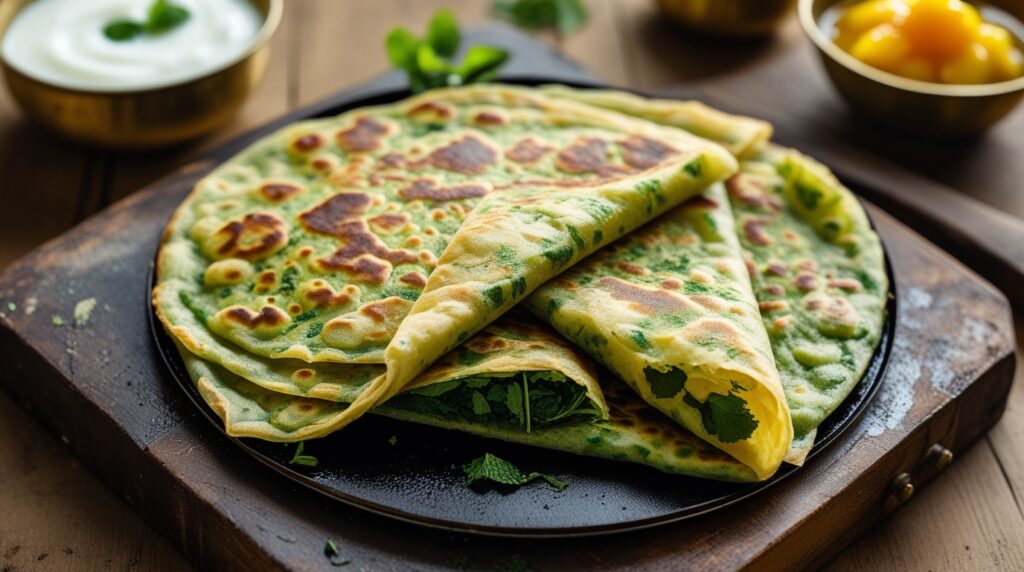
🔥 Frequently Asked Questions: Punjabi-style Pudina Paratha recipesecrets revealed!
Q1: How is Punjabi-style Pudina Paratha different from regular Pudina Parathas?
Answer: Punjabi versions have twice as much fresh mint, whole spices roasted in ghee for thickness, and a special fold-and-layer technique is used for flakiness. Unlike the quick versions, traditional recipes rest the dough for up to 30 minutes for soft, chewy layers. Pro tip: “Punjabi parathas don’t miss the ghee – it adds a unique flavour to every bite!”
Q2: Why does my Pudina Paratha turn out bitter or soggy?
Answer: Two reasons:
Bitterness: Overmixing mint increases the bitterness. Instead, chop it finely by hand.
Consistency: Wet mint or overly kneaded dough. Dry the leaves completely and knead the dough till it becomes smooth (like an earlobe texture!).
Question 3: Can I make these gluten-free or vegan?
Answer: Absolutely!
Gluten-free: Use a mix of jowar and gram flour instead of wheat flour.
Vegetarian: Use coconut oil instead of ghee.
Note: The texture changes a bit – but the taste remains vibrant!
Question 4: How do I make restaurant-like flaky layers at home?
Answer: Learn how to make Punjabi folds:
Roll out the dough into a circle.
Apply ghee, sprinkle the filling.
Fold into a crescent → then fold into a triangle.
Roll gently – don’t press too hard! Layers are made by folding, not pressing hard.
Question 5: Is Pudina Paratha healthy?
Answer: Surprisingly, yes!
Mint aids digestion (Study: International Journal of Pharmacology).
Whole wheat contains fibre (12 g/cup).
Limit the amount of ghee: Add 1 tsp ghee per paratha, it adds flavour without the extra fat.
Tip: Serve with yogurt for protein

